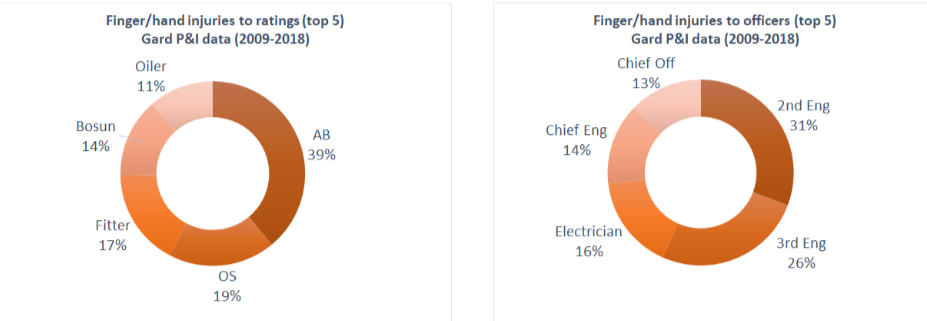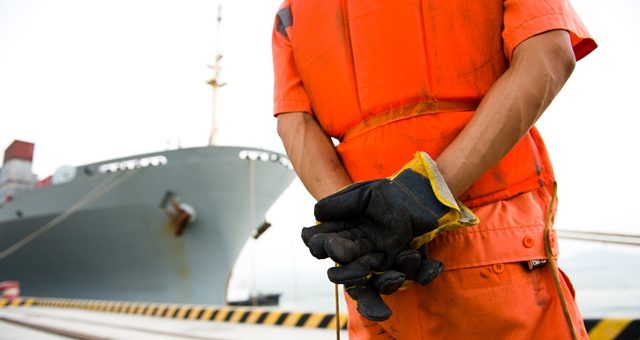The Gard P&I Club reported that over a ten year period between 2009-2018, a 25% of all the crew accidents were finger and hand injuries related. Based on the Club’s portofolio, the data presented that ratings are nearly twice as likely to suffer from such injuries in comparison to the officers.
Apart from the ratings, the majority of finger/hand injuries were reported to the able bodied seamen (AB), while officers and marine engineers are the most vulnerable ones.
As for the costs, around 15% of all the crew injury can be attributed to finer and hand related accidents.

In fact, there is a variety of reasons that could bring finger injuries. The crew’s awareness and experience when operating in jobs that require physical dexterity are playing a major role.
At the same time, alertness depends on the time of the day or even on physical and mental fatigue of the seafarer involved in the operation.
Another scenario is that crewmembers are not fully aware why they need to wear hand protection equipment and don’t know which gloves to choose for each task.
This unawareness leaves the seafarer not wearing gloves at all, or even wear gloves that are not appropriate for the particular task.
Gard Club encourages Safety Management System (SMS) to specify and make clear not only the tasks that demand gloves, but to mention and the type of gloves as well, through a PPE matrix.
In light of the situation, when choosing gloves, Gard and Code of Safe Working Practices (COSWP) recommend to:
- Identify the hazard of the particular task, such as abrasion, cuts, puncture, exposure to chemicals or high temperatures.
- Consider about the size and comfort as the glove has to fit the wearer. They can neither be too tight nor too lose.
- Type and duration of contact with the hazard should also be given due consideration.
- When working on electrical equipment, choose insulated gloves.
- When handling objects which may be sharp or rough, choose leather gloves.
- When handling hot objects, wear heat resistant gloves.
- When handling acids, oils, solvents or chemicals choose rubber, PVC or synthetic gloves.































































